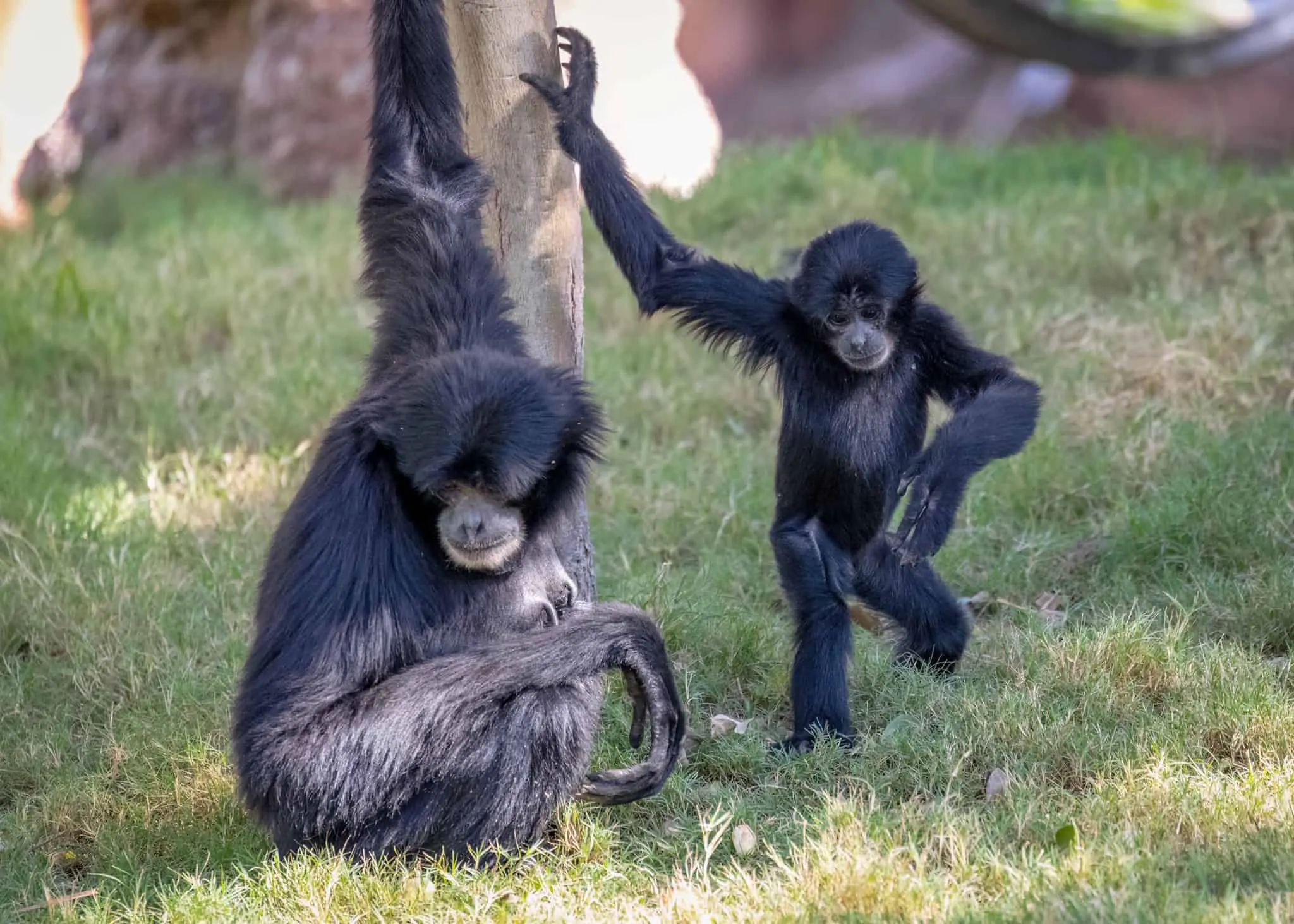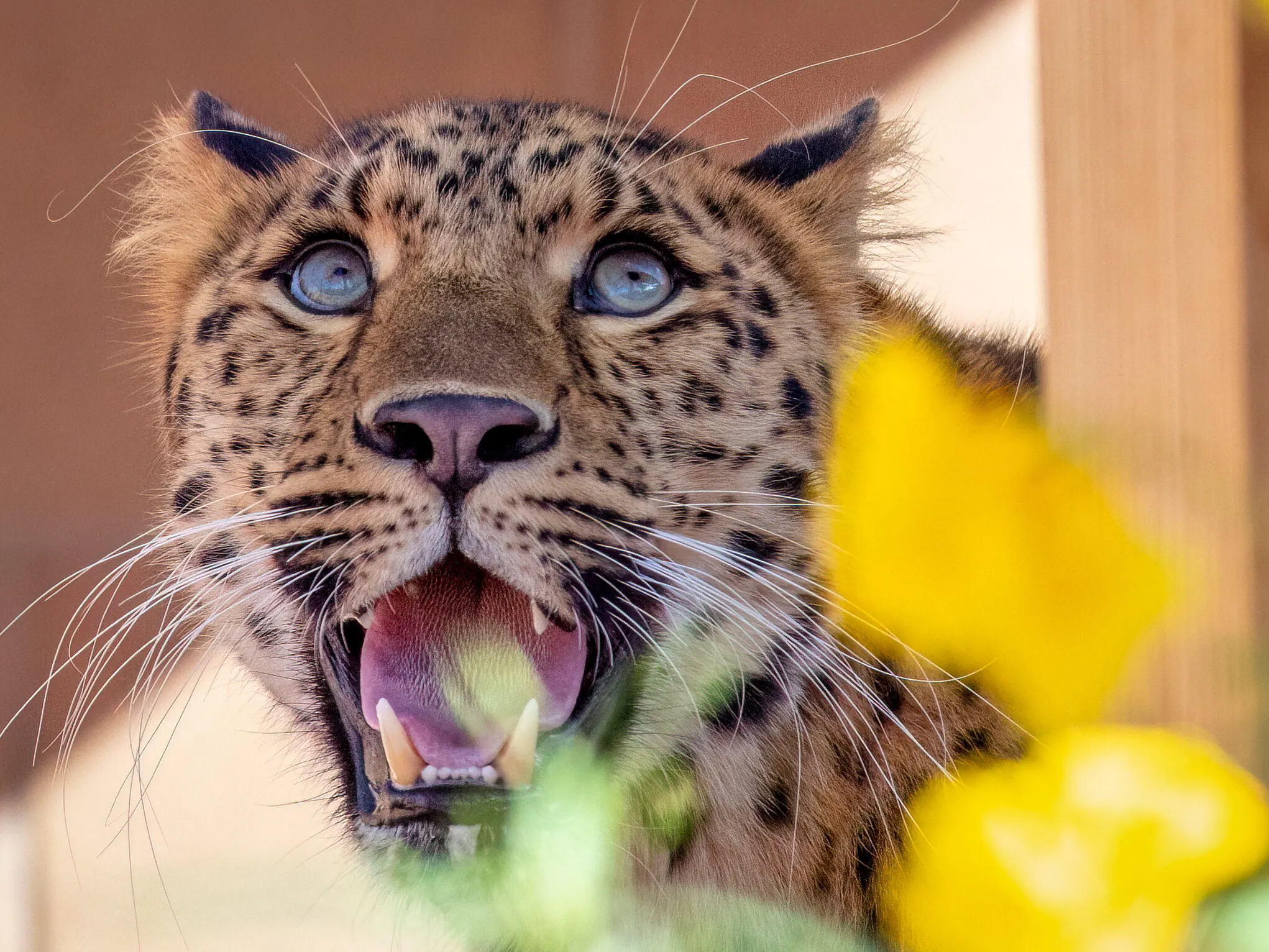Siamang
Symphalangus syndactylus
“The Voice” Has Nothing on These Guys!
Siamangs sing duets from the top of tree canopies, usually in early morning. Their calls can be heard from two kilometers away, which makes them the loudest of the small-bodied apes. Scientists have studied these duets and discovered that they are used to establish territory and strengthen bonds between mates. As these primates are monogamous, which means pairs mate for life, these duets serve an important function.
Anatomy 101
Siamangs are the largest of the gibbon species and the only one to possess a large throat sac, which enables them to belt out their loud and deep songs. They have longer and thinner hair than other gibbons, and their second and third toes are joined by skin. That’s right – they have “webbed” digits! Lastly, their scientific name, Symphalangus, comes from the Greek words “sym,” which means “together,” and “phalanx,” which means “finger.”
Long Arms
Siamangs have long arms with lightweight bones and slender bodies, enabling them to swing far distances. Their arms are significantly longer than their legs, so although they spend the majority of their time in the tree canopies, if they do go to the ground, they will run quickly while holding their arms straight up in the air, so they don’t drag.

Diet: fruits, leaves, flowers, insects
Zoo Diet: formulated feed, starch, veggies, fruits, greens, browse
Habitat: tropical forests
Weight: 22 – 33 lbs



Plan your visit today!
The Phoenix Zoo is one of the largest non-profit zoos in the U.S., caring for over 3,000 animals, with nearly 400 species represented, including many threatened/endangered species.

Plan your visit today!
The Phoenix Zoo is one of the largest non-profit zoos in the U.S., caring for over 3,000 animals, with nearly 400 species represented, including many threatened/endangered species.








